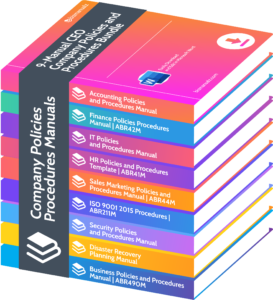What Are Core Operations Processes?

Welcome to the world of business operations! Are you struggling to keep your company running smoothly? Are you wondering how to optimize your daily tasks? Look no further. In this article, we will explore the crucial processes that form the foundation of any successful business. Join us and unlock the secrets to streamlining your core operations. What Are Core Operations Processes?
Understanding Core Operations Processes
Core operations processes are the fundamental activities that a company undertakes to deliver its products or services to customers. These processes serve as the foundation of a business and are crucial for its prosperity. Having a thorough understanding of core operations processes is essential for streamlining operations, increasing efficiency, and achieving customer satisfaction.
Examples of core operations processes include:
- procurement
- production
- inventory management
- quality control
- order fulfillment
By analyzing and optimizing these processes, companies can boost productivity, cut costs, and maintain a competitive advantage in the market. It is imperative for organizations to dedicate time and resources towards comprehending and continuously improving their core operations processes to ensure long-term success and growth.
What Are The Types of Core Operations Processes?
In order to effectively run a business, it is essential to have efficient and effective core operations processes in place. These processes are the backbone of any organization and are responsible for the production and delivery of goods and services.
There are five main types of core operations processes, each with its own unique role and importance. Let’s take a closer look at these processes and how they contribute to the overall success of a business.
1. Product Development Process
The process of developing a product is a critical step in successfully bringing new products to the market. It involves several essential steps that ensure the product meets customer needs and aligns with business goals.
- Idea Generation: This is the initial stage where ideas for new products are generated through market research, customer feedback, or internal brainstorming sessions.
- Concept Development: Once an idea is selected, it is further developed into a concept that outlines the features, benefits, and target market of the product.
- Market Research: This step involves conducting market research to gather insights on customer preferences, market trends, and competition.
- Design and Prototyping: In this stage, the product is designed and prototypes are created to test its functionality and gather feedback for improvements.
- Testing and Validation: The product is thoroughly tested to ensure it meets quality standards and customer expectations.
- Launch and Commercialization: The final step involves launching the product in the market, implementing marketing strategies, and monitoring its performance to make necessary adjustments.
3. Quality Control Process
The process of quality control is essential in guaranteeing that products or services meet the necessary standards and fulfill customer expectations. It involves a series of steps to identify and rectify any issues or defects. Here are the key steps in the quality control process:
- Establish Quality Standards: Define the quality criteria and specifications for the product or service.
- Quality Inspections: Conduct regular inspections and checks throughout the production or service delivery process.
- Testing and Sampling: Perform tests and take samples to assess the quality and conformity of the product or service.
- Identify Defects: Identify any defects, deviations, or non-conformities that fall below the established standards.
- Corrective Actions: Take necessary corrective actions to fix the identified issues and prevent them from recurring.
- Continuous Monitoring: Continuously monitor the quality control process to ensure ongoing compliance with standards.
- Data Analysis: Analyze data collected during the quality control process to identify patterns or trends that may require further improvements.
- Documentation: Maintain comprehensive documentation of all quality control activities and outcomes.
4. Inventory Management Process
Effective inventory management is crucial for businesses to optimize their operations and meet customer demand. Here are key steps in the inventory management process:
- Forecasting: Analyze historical data and market trends to accurately predict demand.
- Stock Monitoring: Regularly monitor inventory levels to avoid stockouts or excess inventory.
- Ordering: Place orders with suppliers based on demand forecasts and reorder points.
- Receiving and Inspection: Receive and inspect incoming inventory for quality and accuracy.
- Storage and Organization: Properly store and organize inventory for efficient retrieval and space utilization.
- Inventory Tracking: Use inventory management software to track item quantities, locations, and movements.
- Inventory Analysis: Analyze inventory data to identify slow-moving items, trends, and opportunities for cost reduction.
- Inventory Control: Implement measures to prevent theft, damage, or spoilage of inventory.
- Inventory Optimization: Continually adjust inventory levels and reorder strategy to minimize costs and maximize customer satisfaction.
By following these steps, businesses can ensure adequate inventory levels, reduce costs, and improve overall operational efficiency.
5. Production Process
The production process is a crucial component of core operations in businesses. It involves a series of steps to transform raw materials into finished products. Key steps in the production process include:
- Procurement: Acquiring the necessary raw materials and resources.
- Planning: Determining the production schedule, allocating resources, and setting quality standards.
- Assembly: Putting together the components or parts to create the final product.
- Testing: Conducting quality checks and inspections to ensure product specifications are met.
- Packaging: Packaging the finished products for storage, distribution, and sale.
- Delivery: Transporting the products to customers or distribution centers.
- Feedback: Collecting customer feedback to improve the production process.
Efficient production processes are essential for meeting customer demand, ensuring product quality, and optimizing operational efficiency. Continuous improvement strategies, technology integration, and employee training can help businesses enhance their production processes. Challenges such as resistance to change and resource limitations should be addressed to ensure smooth implementation. Ultimately, a well-executed production process contributes to the overall success and profitability of a business.
Why Are Core Operations Processes Important?
Why are Core Operations Processes Important?
Core operations processes are essential for the success and efficiency of any organization. They are the primary activities that directly contribute to the production and delivery of goods or services. These processes are critical in ensuring seamless operations, meeting customer demands, and achieving business objectives.
By optimizing these processes, companies can lower costs, increase productivity, improve customer satisfaction, and gain a competitive advantage in the market. They are crucial because they allow organizations to consistently deliver high-quality products or services, streamline operations, and maintain a strong reputation in the industry.
How Can Businesses Improve Their Core Operations Processes?
Every successful business relies on efficient and effective core operations processes to run smoothly. But how can businesses ensure that their core operations processes are running at their best? In this section, we will discuss five key ways that businesses can improve their core operations processes. From streamlining processes to employee training and development, we will explore the various strategies that can help businesses optimize their core operations and achieve greater success.
1. Streamlining Processes
Streamlining processes is essential for businesses to enhance efficiency and productivity. Below are the steps to streamline core operations processes:
- Analyze current processes to identify bottlenecks and areas that can be improved.
- Eliminate unnecessary steps or tasks that do not add value to the process.
- Standardize processes to ensure consistency and minimize errors.
- Automate manual tasks using technology to save time and reduce human error.
- Implement communication and collaboration tools to streamline the flow of information.
2. Automation and Technology Integration
Automation and technology integration play a crucial role in improving core operations processes for businesses. By incorporating automation and technology, workflows can be streamlined, productivity can be enhanced, and overall efficiency can be improved. To successfully implement automation and technology integration, follow these steps:
- Analyze current processes and identify areas that can benefit from automation.
- Research and select appropriate technologies and software solutions for automation.
- Ensure compatibility and integration of the chosen technologies with existing systems.
- Train employees on how to effectively use and integrate automated systems.
- Monitor and evaluate the performance of automated processes and make necessary adjustments as needed.
3. Continuous Improvement Strategies
Continuous improvement strategies play a crucial role in enhancing core operations processes within businesses. Here are some steps to effectively implement these strategies:
- Identify areas for improvement by conducting regular evaluations and assessments
- Set specific and measurable goals to guide the continuous improvement process
- Engage employees at all levels to generate ideas and suggestions for improvement
- Gradually implement changes, allowing for experimentation and learning
- Monitor progress and measure outcomes to track the effectiveness of the improvements
To further optimize continuous improvement, businesses should also consider investing in technology and automation, providing ongoing training and development opportunities for employees, and fostering a culture of collaboration and open communication. By committing to continuous improvement, businesses can ensure that their core operations processes remain efficient, productive, and adaptable to changing market demands.
4. Employee Training and Development
Employee training and development are essential for increasing productivity, efficiency, and employee satisfaction in core operational processes. Follow these steps to ensure effective training and development:
- Assess Needs: Identify any skill gaps or areas for improvement in employee performance.
- Set Goals: Establish clear objectives for training programs that align with business goals.
- Design Training Programs: Develop tailored training programs that focus on specific skills or areas of knowledge.
- Deliver Training: Utilize a variety of methods, such as workshops, e-learning, or on-the-job training, to effectively deliver content.
- Provide Feedback: Offer constructive feedback to employees to promote growth and development.
- Continuous Learning: Encourage ongoing learning through workshops, seminars, and certifications.
- Evaluate Results: Assess the effectiveness of training programs through evaluations and feedback from employees.
- Support Career Development: Provide opportunities for career advancement and growth within the organization.
By investing in employee training and development, businesses can improve performance, increase employee satisfaction, and drive overall success in core operational processes.
5. Collaboration and Communication
Collaboration and communication are essential elements in ensuring effective core operations processes. To improve these aspects within a business, follow these steps:
- Promote a culture of collaboration: Create an environment where employees feel comfortable sharing ideas and working together.
- Utilize effective communication channels: Make use of tools such as project management software, instant messaging platforms, and regular team meetings.
- Encourage cross-functional collaboration: Break down barriers between departments or teams by promoting collaboration.
- Define clear roles and responsibilities: Clearly outline roles and responsibilities to avoid confusion and ensure smooth communication.
- Encourage feedback and open dialogue: Provide opportunities for employees to share feedback, express concerns, and suggest improvements.
By prioritizing collaboration and communication, businesses can improve their core operations processes and ultimately increase efficiency and productivity.
What Are The Challenges Of Implementing Core Operations Processes?
In any business, implementing core operations processes can bring about significant improvements in efficiency and productivity. However, this task is not without its challenges. In this section, we will discuss the common obstacles that businesses face when implementing core operations processes.
From resistance to change to maintaining consistency and quality, we will delve into the complexities of integrating these processes into a company’s operations. By understanding these challenges, businesses can better prepare for a smooth and successful implementation of core operations processes.
2. Lack of Resources
Lack of resources is a common challenge in implementing core operations processes. Limited funding, inadequate staffing, and outdated technology can hinder efficiency and productivity. To address this issue, businesses can explore alternative solutions such as outsourcing certain operations, investing in cost-effective technology upgrades, and optimizing resource allocation.
A true story that exemplifies this is a small manufacturing company that struggled with a lack of resources. They formed a partnership with a larger company to share resources and expertise, resulting in improved operational efficiency and increased profitability.
3. Integration Issues
Integration issues can pose challenges when implementing core operations processes. To effectively address these issues, businesses can follow these steps:
- Ensure compatibility: Make sure that all systems, software, and technologies being integrated are compatible with each other.
- Plan ahead: Develop a detailed integration plan that includes timelines, milestones, and responsibilities.
- Test and validate: Thoroughly test the integration process to identify and resolve any potential issues or conflicts.
- Train employees: Provide comprehensive training to employees to ensure they understand the new integrated processes and can use them effectively.
- Communicate: Maintain open and transparent communication channels to address any concerns or questions during the integration process.
By following these steps, businesses can successfully navigate integration issues and smoothly implement core operations processes.
4. Maintaining Consistency and Quality
Maintaining consistency and quality in core operations processes is essential for achieving business success. To ensure this, follow these steps:
- Establish clear quality standards and expectations.
- Implement robust quality control measures at each stage of the process.
- Regularly monitor and assess performance against set metrics.
- Identify areas for improvement and take prompt corrective actions.
- Provide training and empower employees to prioritize quality and adhere to standardized procedures.
By consistently monitoring and improving processes, businesses can guarantee the delivery of high-quality products or services, earn customer trust, and maintain a competitive advantage.
Core Operations Processes
Through process analysis and optimization, businesses can increase output, reduce expenses, and preserve their competitive edge. To ensure long-term success and growth, organizations must commit time and resources to understanding and continuously improving their core operations processes.
Frequently Asked Questions

What are Core Operations Processes?
Core Operations Processes refer to the essential functions and activities that enable an organization to carry out its daily operations effectively and efficiently. These processes are the backbone of any business and contribute to its overall success.
What are some examples of Core Operations Processes?
Some examples of Core Operations Processes include production, inventory management, quality control, supply chain management, and customer service. These processes are essential for businesses in various industries, such as manufacturing, retail, and service.
Why are Core Operations Processes important?
Core Operations Processes are important because they help organizations to achieve their goals and objectives. They ensure that products and services are delivered to customers in a timely and efficient manner, resulting in increased customer satisfaction and loyalty.
How can companies improve their Core Operations Processes?
Companies can improve their Core Operations Processes by continuously reviewing and analyzing them to identify areas for improvement. This can include implementing new technologies, streamlining workflows, and investing in employee training and development.
What are the benefits of having well-defined Core Operations Processes?
Having well-defined Core Operations Processes can result in several benefits for a company, including increased productivity, reduced costs, improved quality, and enhanced customer satisfaction. It also allows for better decision-making and adaptability to changes in the market.
How can a company measure the effectiveness of their Core Operations Processes?
Companies can measure the effectiveness of their Core Operations Processes by setting key performance indicators (KPIs) and regularly monitoring and analyzing them. Examples of KPIs could include production cycle time, inventory turnover, customer satisfaction ratings, and cost savings.

















Leave a Reply